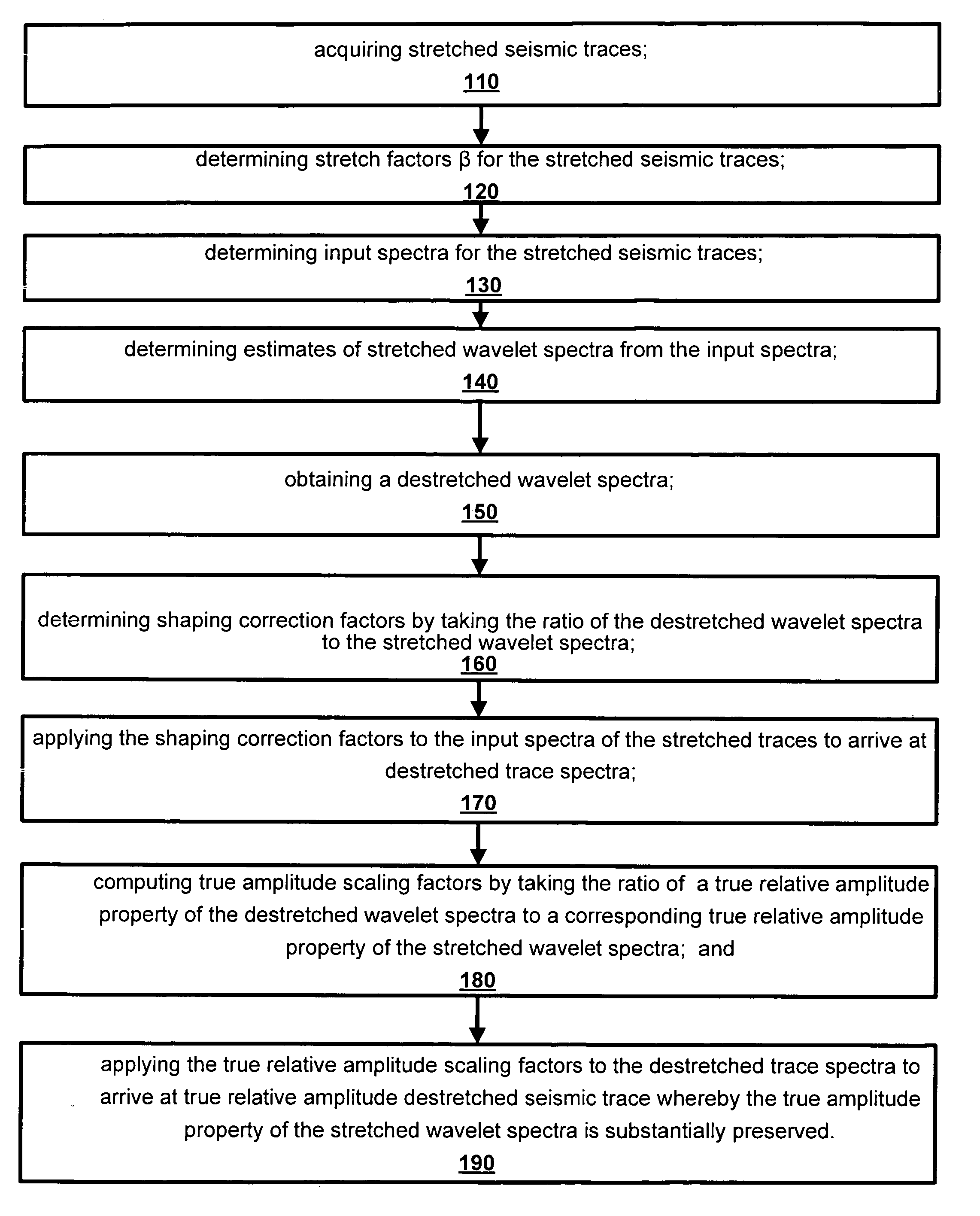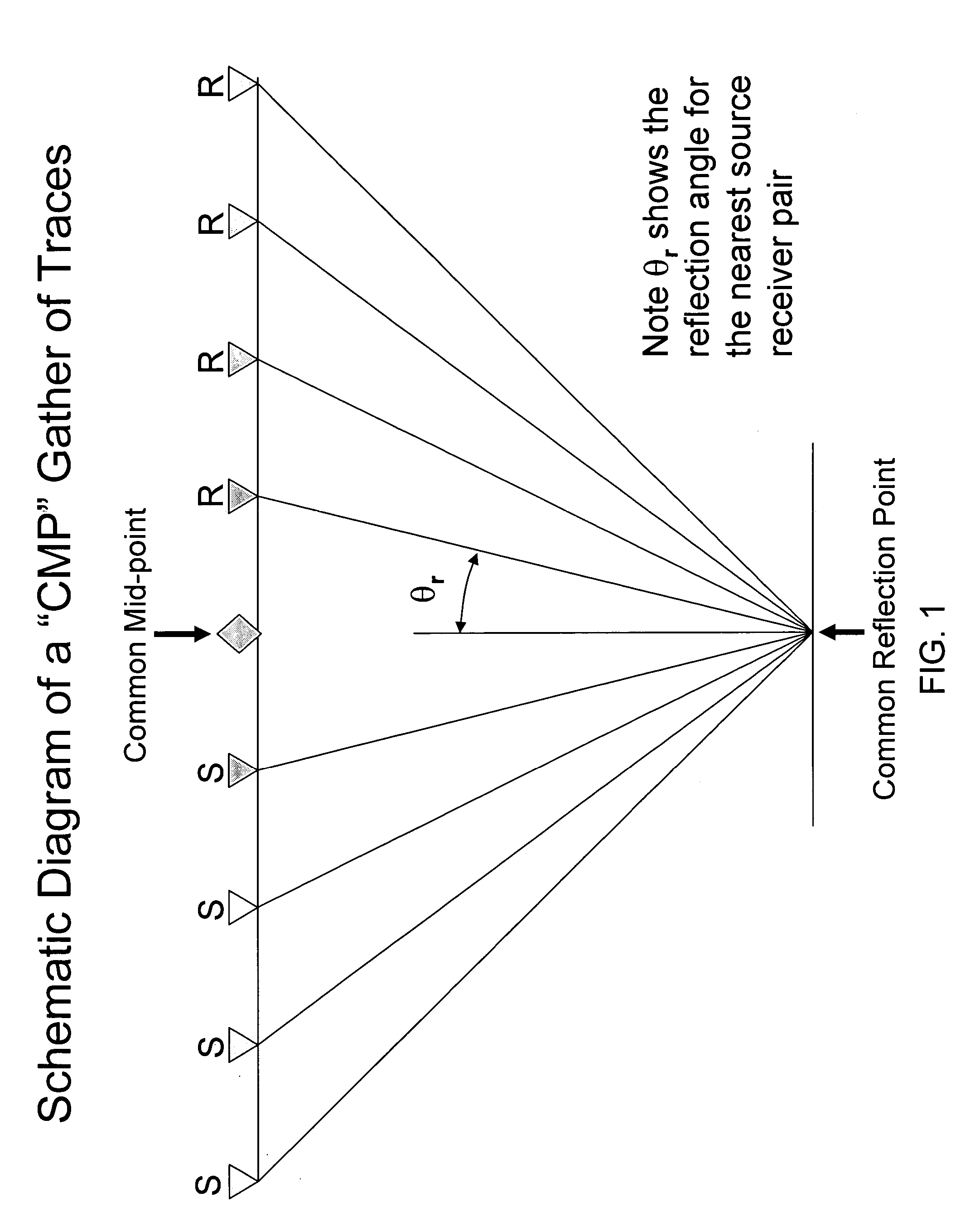Method and apparatus for true relative amplitude correction of seismic data for normal moveout stretch effects
a technology of relative amplitude correction and seismic data, applied in the field of methods of analyzing seismic reflection data for subsurface properties, can solve the problems of velocity analysis, difficult to directly compare common event amplitude strengths of different offset traces to one another, and other unwanted components in recorded traces
- Summary
- Abstract
- Description
- Claims
- Application Information
AI Technical Summary
Benefits of technology
Problems solved by technology
Method used
Image
Examples
Embodiment Construction
I. Convolutional Model Applied to Normal Moveout Stretch
[0028]An accepted model for processed seismic data amplitudes provides that the amplitudes represent the convolution of a source excitation wavelet with subsurface reflection coefficients derived from the changes in elastic properties at subsurface interfaces. The time domain form of this model provides that processed seismic data traces, prior to NMOR, can be represented as the convolution of a wavelet with an earth reflection coefficient function or:
d(t,t0j,Δtj)=ƒw(τ)r(t−t0j−Δtj−τ)dτ (1)
where d(t,t0j,Δtj) is a seismic data trace, w(τ) is the wavelet and r(t−t0j−Δtj) is a sum of discrete subsurface reflection coefficient delta (impulse) functions given by:
r(t−t0j−Δtj)=Σrjδ(t−t0j−Δtj). (2)
[0029]In this expression, rjδ(t−t0j−Δtj) is a time domain representation of the jth reflection coefficient of magnitude rj with a zero offset time of t0j and a pre-NMOR time shift of Δtj.
[0030]In the frequency domain, this convolution is e...
PUM
 Login to View More
Login to View More Abstract
Description
Claims
Application Information
 Login to View More
Login to View More - R&D
- Intellectual Property
- Life Sciences
- Materials
- Tech Scout
- Unparalleled Data Quality
- Higher Quality Content
- 60% Fewer Hallucinations
Browse by: Latest US Patents, China's latest patents, Technical Efficacy Thesaurus, Application Domain, Technology Topic, Popular Technical Reports.
© 2025 PatSnap. All rights reserved.Legal|Privacy policy|Modern Slavery Act Transparency Statement|Sitemap|About US| Contact US: help@patsnap.com



